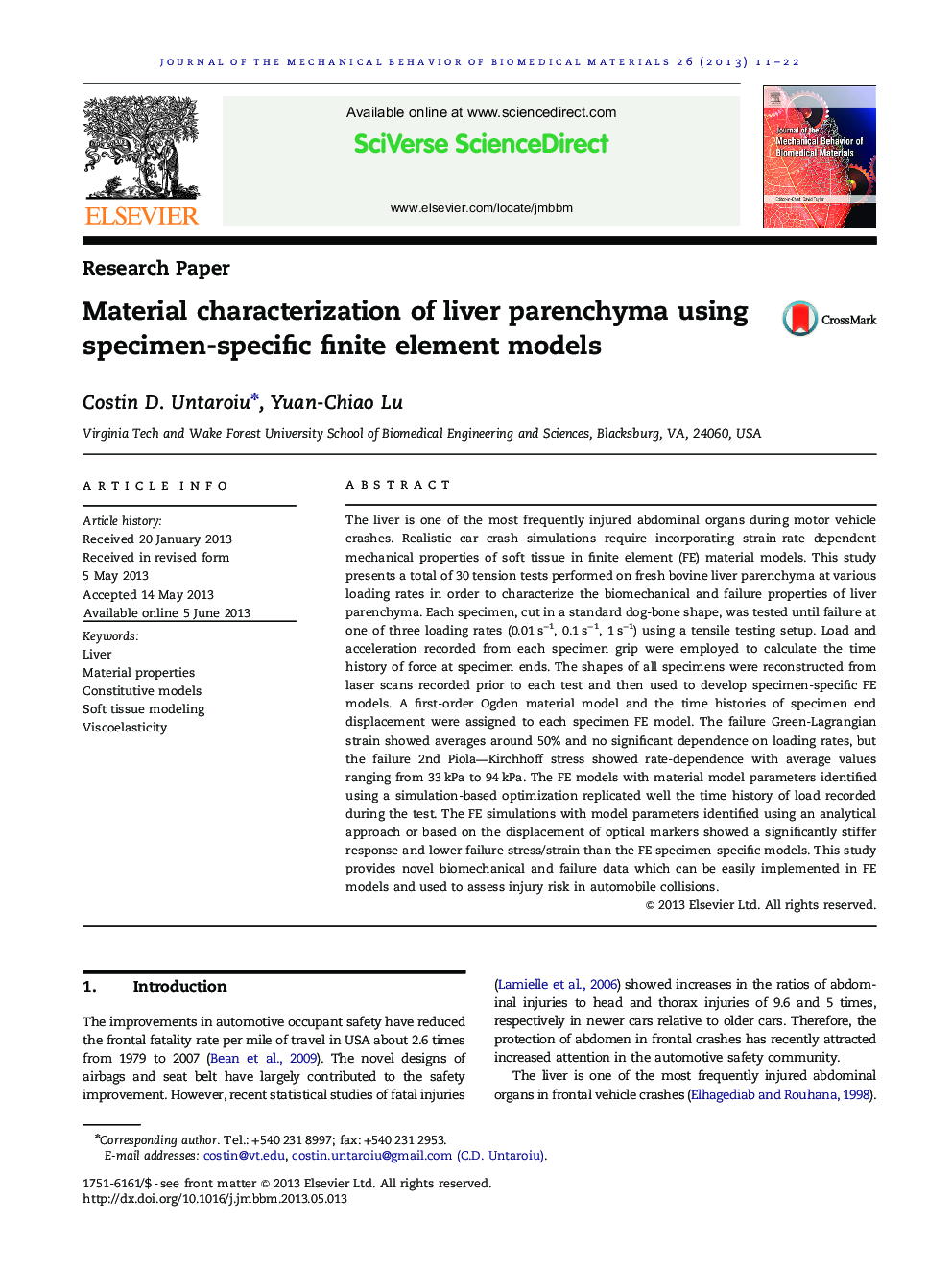| Article ID | Journal | Published Year | Pages | File Type |
|---|---|---|---|---|
| 810830 | Journal of the Mechanical Behavior of Biomedical Materials | 2013 | 12 Pages |
The liver is one of the most frequently injured abdominal organs during motor vehicle crashes. Realistic car crash simulations require incorporating strain-rate dependent mechanical properties of soft tissue in finite element (FE) material models. This study presents a total of 30 tension tests performed on fresh bovine liver parenchyma at various loading rates in order to characterize the biomechanical and failure properties of liver parenchyma. Each specimen, cut in a standard dog-bone shape, was tested until failure at one of three loading rates (0.01 s−1, 0.1 s−1, 1 s−1) using a tensile testing setup. Load and acceleration recorded from each specimen grip were employed to calculate the time history of force at specimen ends. The shapes of all specimens were reconstructed from laser scans recorded prior to each test and then used to develop specimen-specific FE models. A first-order Ogden material model and the time histories of specimen end displacement were assigned to each specimen FE model. The failure Green-Lagrangian strain showed averages around 50% and no significant dependence on loading rates, but the failure 2nd Piola—Kirchhoff stress showed rate-dependence with average values ranging from 33 kPa to 94 kPa. The FE models with material model parameters identified using a simulation-based optimization replicated well the time history of load recorded during the test. The FE simulations with model parameters identified using an analytical approach or based on the displacement of optical markers showed a significantly stiffer response and lower failure stress/strain than the FE specimen-specific models. This study provides novel biomechanical and failure data which can be easily implemented in FE models and used to assess injury risk in automobile collisions.
